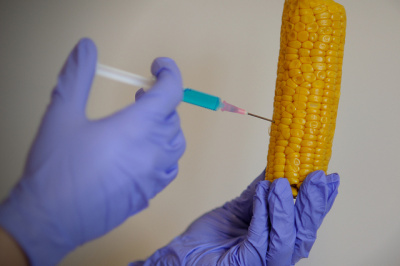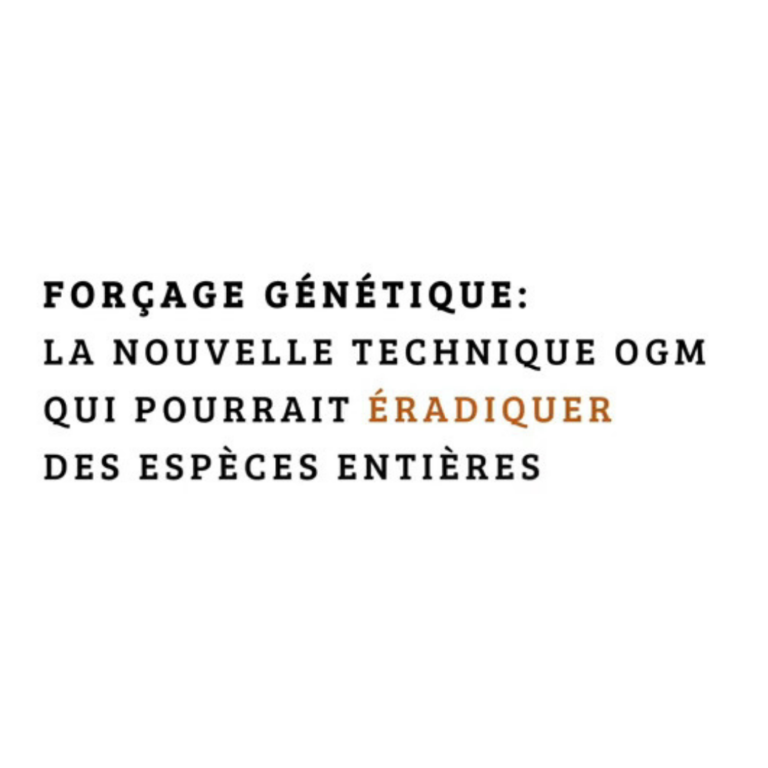Actualités
GMOs: databases are fueling confusion

Since autumn 2021, the European Commission has launched a legal initiative to consider a new framework for organisms modified genetically through “directed mutagenesis and cisgenesis”. Which GMOs exactly will be concerned? Two European databases, analysed by Inf’OGM, provide one of the possible answers, namely a very broad reading of products that would not be GMOs.
The EUGinius database [1] was created by Wageningen University in the Netherlands and the Federal Office of Consumer Protection and Food Safety in Germany. As of 29 June 2022, it registered 870 GMOs, either plants or animals. It provides various information for each of them, including the company or research institute that developed it, a description of the genetic modifications made and the tools used, the various genetic sequences, and the detection and identification methods.
According to EUGinius, 52 GMOs have been obtained by “genome editing”.
This database also has the particularity of listing 52 genetically ’edited’ organisms, thus using the companies’ own terminology. When it talks about genetically ’edited’ organisms, EUGinius means organisms “which have been developed with NGT and without the addition of foreign DNA”. A definition which has no legal basis as genetically ’edited’ organisms are GMOs.
None of these 52 organisms are authorised in the European Union. EUGinius does not list commercial authorisations elsewhere in the world. In terms of plants, these are mainly maize, potato, oilseed rape, soya or rice, tomato, wheat (see table below)… In terms of characteristics, it is about tolerance to herbicides, insecticide characteristics or resistance to parasites, as well as modified composition, delayed flowering (see table below)… Finally, the actors involved vary slightly from those of transgenic GMOs. The developers are the usual Corteva, Dow AgroScience, Dupont, but also Calyxt, Cibus, Intrexon…
On the basis of these data, one might be tempted to believe that organisms resulting from new genetic modification techniques have broader characteristics and are developed by more actors than those of transgenic GMOs. This is misleading. The GMOs ’edited’ and registered in this database are those “that could become market relevant” even though “information on whether an organism has been developed for commercial use is difficult to obtain”. The database considers that an edited GMO is potentially marketable depending on “the trait introduced, requests of approval to [some national authorities] or registration (example Japan), advanced development (field trials), announced commercialization on the part of the developer”. But many of these GMOs may never be commercialised.
Databases of proof-of-concept?
A quick overview of this database might lead competent authorities and private users to believe that new techniques are being increasingly used to produce commercialised GMOs. It is not the only one to maintain this blur. A striking example is the database put online by the EUSage lobby.
The EUSage database [2], maintained by a pro-GMO group and accessible online, lists scientific articles that show the feasibility of genetic modification in a given species using one of the new genetic modification tools. The people in charge of this database explain that they are informing “interested stakeholder communities in a transparent manner about the latest evidence about genome editing applications in crops”. To this end, “a literature search in the bibliographic databases and web pages of governmental agencies was conducted using predefined queries (…) Patents were not screened”. It lists 571 GMOs from selected scientific articles with a “main criterium (…) that the research article should describe a research study of any crop developed for market-oriented agricultural production as a result of a genome editing”. According to this database, the herbicide tolerance trait is a minority with 45 GMOs out of 571 listed. The other characteristics displayed concern nutritional quality (124 GMOs), plant yield (116 GMOs) or tolerance to biotic stresses (parasites) (92 GMOs).
However, these are GMOs for which a proof of concept has been provided by scientific articles. These are not GMOs for which an application for authorisation is ongoing, or has even been granted. We are therefore in the economy of promise and not in the real economy.
The database also contains an erroneous classification of certain GMOs. Like the EUGinius database, this one lists, for example, a ARGOS8 maize by Dupont Pioneer. Although it is listed as being obtained by ’genome editing’, the reality is quite different. This ARGOS8 maize was produced in a (very) complex way. Firstly, a transgene was shot onto cells isolated and multiplied in vitro. Once integrated into the genome, this transgene codes for a Crispr/Cas9 complex that will cut the genome. Secondly, a cisgenic construct (derived from maize genetic sequences), was also shot and had to insert itself where Crispr/Cas9 has cut. Once plants were regenerated and selected, several crosses were made to retain only the plants without the transgene.
Legally, this maize is a GMO within the meaning of Directive 2001/18, since it is a) a cisgenic GMO obtained from a transgenic GMO, and also within the meaning of Regulation 1829/2003, since it is :
a) a regulated GMO and
b) a food produced from GMOs.
But both databases, EUGinius and EUSage, classify it as genetically edited maize obtained by Crispr/Cas9. The European Commission may be tempted to do the same by declaring it “cisgenic” only and thus potentially covered by the legal initiative it has launched in autumn 2021.
As we have seen, for the EUSage database, 571 GMOs obtained by new techniques have been selected with the criterion that the research article being the proof of concept must describe “a research study of any crop developed for market-oriented agricultural production as a result of a genome editing”. While this may artificially inflate the number of genetically modified organisms, this approach to possible commercialisation is in fact highly theoretical. For, as we have already seen in an article with transgenic GMOs [3], the difference between GMOs tested in the field and those actually marketed is great: more than 60 crops tested between 2003 and 2020 compared with four crops grown commercially…
| The organisms | The characteristics | The actors |
| 9 maize 6 potatoes 5 rice 4 oilseed rape 4 soya 3 tomatoes 2 wheat 2 lettuces 1 camelina 1 orange 1 barley 1 cassava 1 banana 1 tobacco 1 avocado 1 green bristlegrass 1 field pennycress (a brassicae which oil is used to produce agrofuel) 1 grape 2 mushrooms 1 cattle 1 pig 3 fishes |
13 modification of the growth rate / yield / quality 13 resistance to pathogen (bacteria, virus, fungi…) 11 modification of the composition (amylose, fatty acid…) 6 reduced browning 4 herbicide tolerance 2 salinity tolerance 1 drought tolerance 1 cold or heat tolerance 1 ergot alkaloid free 1 altered silique shatter resistance 1 modification of the shoot architecture |
Acceligen AquaBounty Technologies Intrexon Benson Hill Biosystems Calyxt Cibus Corteva Agriscience DOW AgroSciences DuPont Pioneer Pioneer Hi-Bred International Genus plc J.R. Simplot Pioneer HiBred International Regional Fish Institute Sanatech Seed Co. Soil Culture Solutions ToolGen Yield10 Bioscience |
[1] EUGinius database, http://euginius.eu/euginius/pages/home.jsf (last checked on july 2022, the 6th)
[2] EUSage database, http://www.eu-sage.eu/genome-search (last checked on july 2022, the 6th).














